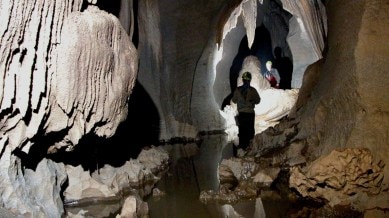📣 For more lifestyle news, click here to join our WhatsApp Channel and also follow us on Instagram
Earth has entered the Meghalayan Age — here’s what it means for the planet
Did you know Earth’s youngest geological age is named after a cave in Meghalaya?

When we think of Meghalaya, we picture misty hills and waterfalls. But did you know this northeastern Indian state has also left its mark on Earth’s official geological timeline? Welcome to the Meghalayan Age — the youngest chapter in our planet’s 4.6-billion-year-old history, officially recognised by the International Union of Geological Sciences (IUGS) in 2018. Earth’s newest geological age is named after a cave in Meghalaya.
What exactly is the Meghalayan age?
And here’s where Meghalaya steps in: these clues were found in Mawmluh Cave, near Cherrapunji, one of the wettest places on Earth. The mineral layers inside this cave provided the perfect natural record of that global climatic event, making it a geological benchmark for the entire planet.
How the discovery was made
Scientists studying the cave’s stalagmites discovered a distinct layer rich in oxygen isotopes, indicating a major, long-term drought that occurred around 2200 BCE. This was no local anomaly — similar patterns were observed across continents, from Egypt and Mesopotamia to China. The drought was so severe that it coincided with the collapse of several ancient civilisations, including the Akkadian Empire in Mesopotamia, the Old Kingdom of Egypt, and the Indus Valley Civilisation closer home.
Thus, the Meghalayan Age was born — named after the region where nature’s own diary, etched in stone, held the most complete record of that turning point in Earth’s climate.
Why it matters today
The Meghalayan Age isn’t just a scientific classification — it’s a reminder of how climate has always shaped human destiny. The shift that defined this era forced ancient societies to adapt, migrate, or perish. It serves as a sobering parallel to our own times, as we face contemporary challenges such as global warming, water scarcity, and shifting weather patterns.
In a way, the Meghalayan Age is both a scientific milestone and a testament to resilience — a story of how humanity has continued to evolve amid shifting climates.
📣 For more lifestyle news, click here to join our WhatsApp Channel and also follow us on Instagram